I’m bored, so I’m taking random cocktail recipes from The Savoy Cocktail Book (1930), giving them a try, and modifying/improving them if I think it’s necessary, and reporting my findings here.
Warday’s Cocktail
[p. 169]

This one was pleasant enough, but kind of lackluster. I almost splurged and used some of my very precious green chartreuse — and I am assuming they meant green, not yellow — but chickened out and used Boomsma Kloosterbitter instead. (I may make it again with one of the other not-quite-chartreuses in my cabinet to see how they work. And I may break out the actual Chartreuse.) At any rate, after a sip or two I added another teaspoon of the Kloosterbitter and that helped a lot.
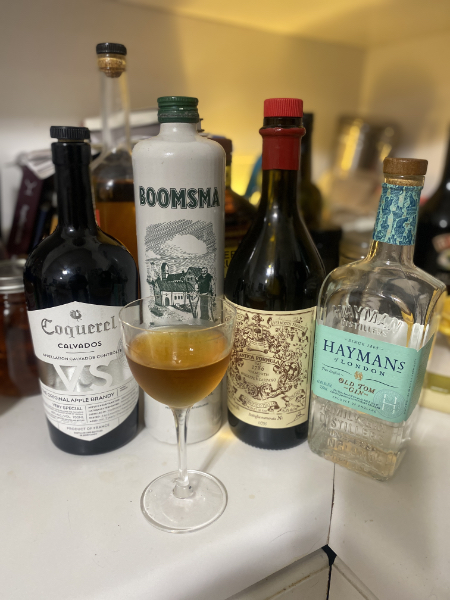 You will also notice that I used Old Tom gin. I was surprised to discover that I had no actual dry gin in the cabinet. Don’t know how that happened, so I may take steps to remedy that before making this again. Also, I could play around with the sweet vermouth to see if one of the others might bump it up a bit.
You will also notice that I used Old Tom gin. I was surprised to discover that I had no actual dry gin in the cabinet. Don’t know how that happened, so I may take steps to remedy that before making this again. Also, I could play around with the sweet vermouth to see if one of the others might bump it up a bit.
- 3/4 oz sweet vermouth
- 3/4 oz dry gin
- 3/4 oz Calvados/apple brandy
- 2 tsp green chartreuse
I’m counting this one as my improvement, especially if I make more with alternate ingredients.
SAVOY VARIATIONS SCORECARD:
- Savoy: 7
- Dale: 3
- Sink: 4


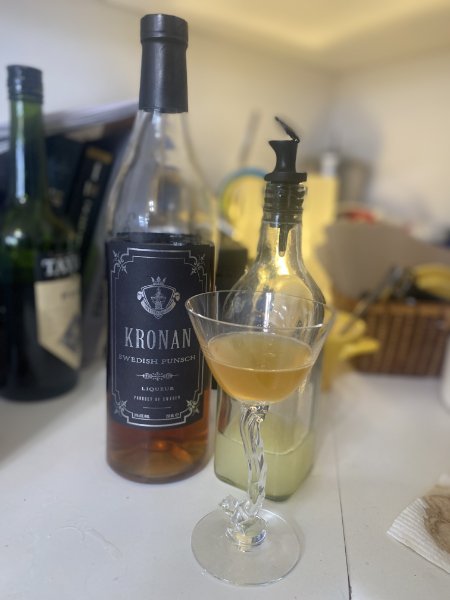


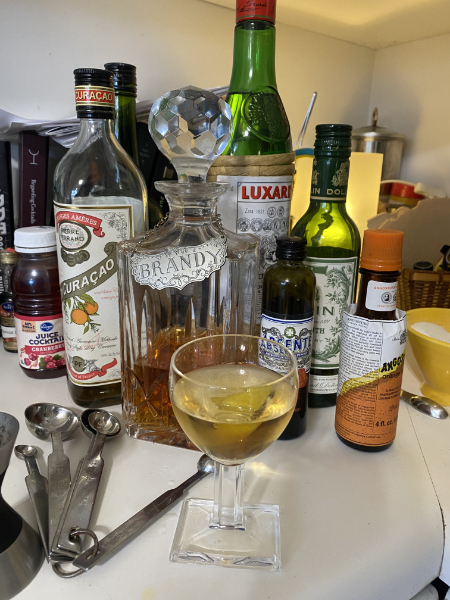

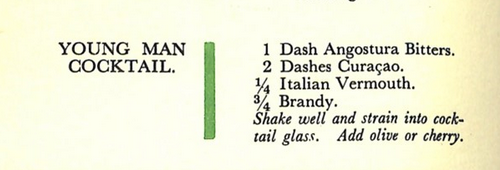
 I opened the Savoy Cocktail Book randomly and there was the White Lily Cocktail. Wow, I thought, there is no way that this is going to be palatable. Rum + gin? And a dash of absinthe?
I opened the Savoy Cocktail Book randomly and there was the White Lily Cocktail. Wow, I thought, there is no way that this is going to be palatable. Rum + gin? And a dash of absinthe?
 This one turned out to be a winner, but it took some figuring. The original recipe confirms my suspicion that most of these 700+ recipes were just quick slugs for the Bright Young Things who splashed into the Savoy before heading out to the jazz clubs — no self-respecting bartender these days would publish a recipe with no actual measurements.
This one turned out to be a winner, but it took some figuring. The original recipe confirms my suspicion that most of these 700+ recipes were just quick slugs for the Bright Young Things who splashed into the Savoy before heading out to the jazz clubs — no self-respecting bartender these days would publish a recipe with no actual measurements.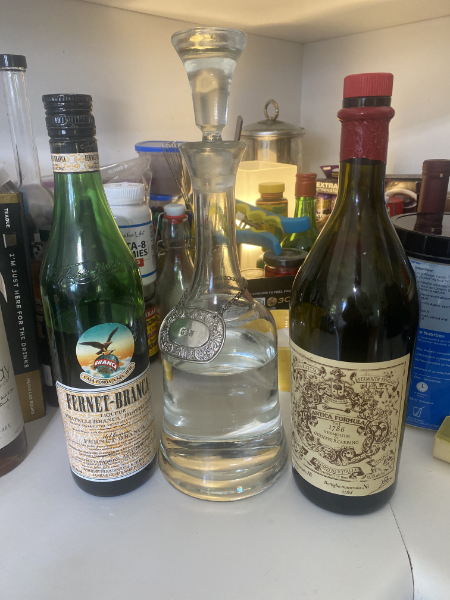 I figured I was going to hate this one before I even started: Fernet Branca, while a darling of professional bartenders
I figured I was going to hate this one before I even started: Fernet Branca, while a darling of professional bartenders Vecchio Amaro Cocktail
Vecchio Amaro Cocktail
 (6 people)
(6 people)

 And finally, the evening began.
And finally, the evening began.